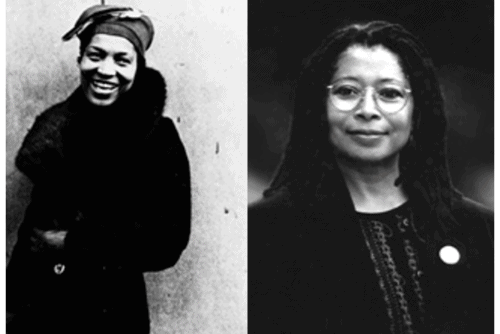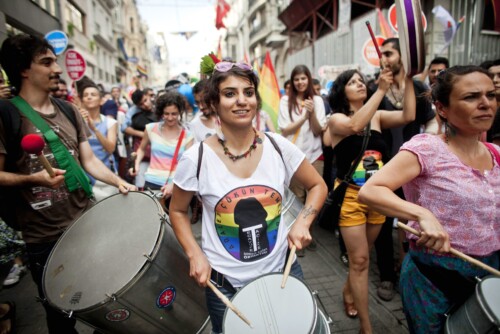Hurston did not waste time lamenting her situation. She continued to explore the meaning of the art of the “undreamed-of geniuses” and to create her own. Her essays, no less than her fiction and ethnography, anticipate concerns and innovations of recent African American writing. They formulate and enact an aesthetic that still seems contemporary.
“Folklore and Music,” an essay that was also written for “The Florida Negro,” opens with a vivid metaphor: “folklore is the boiled-down juice of human living.” (Every time I read that I hear the voice of Gwendolyn Brooks intoning “poetry is life distilled.”) Aphorisms and domestic metaphors contend with more abstract representations in this essay. If, on the one hand, “in folklore, as in everything else that people create, the world is a great, big, old serving-platter, and all the local places are like eating-plates,” then art, on the other hand, no less than Newton’s discovery of gravity, “is a discovery in itself.”1 The paragraph that begins with that sentence ends with a statement so often repeated that it has acquired the force of received wisdom: “Folklore is the arts of the people before they find out that there is any such thing as art, and they make it out of whatever they find at hand.”2 I have quoted that line often myself, so often that I am taken aback to realize what comes next in the text: “Way back there when Hell wasn’t no bigger than Maitland, man found out something about the laws of sound.”3 To my ear this is one of those odd discursive juxtapositions that echoes the jagged harmonies of the spirituals. Of course, the lyrics of the spirituals can shift instantly from the humorous to the transcendent and back again. “Scandalize My Name” and “Sit Down, Sister” come to mind. But the tonal shifts here come close to music.
Appropriating the voice of the storyteller, Hurston goes on to theorize about sound. Even before man could stand erect, she tells us, “he found out that sounds could be assembled and manipulated and that such a collection of sound forms could become as definite and concrete as a war-axe or a food tool.”3 Here is as powerful an image of the necessity of art as one is likely to find. Language and song become as central to human experience as war (Hurston is not sentimental about the human condition) and as essential as food. Music and literature derive from the same root. In Hurston’s distillation, “somewhere songs for sound-singing branched off from songs for storytelling until we arrive at prose.”4 The first musical form she analyzes is the blues. She strives to transcribe the sound of the music on the page, using italics to represent the stress and variation of the lyric; observing that “the whole thing walks with rhythm.” As she surveys the forms of sung poetry, she concludes unsurprisingly that the ballad is the closest to poetry. Yet, in the 13 folktales that follow, the speakers continue to devise their own combinations of the “sound and sense” that Hurston perceives as the elements of literature.
In her effort to render the sound of African American life on the page, Hurston is near the head of a long line of writers: behind Douglass and DuBois, alongside Hughes and Sterling Brown, ahead of Ellison and his explorations of “Sound and the Mainstream” and of Larry Neal, who theorized “sound as racial memory.”5 The list is long. I think, lastly, of Toni Morrison’s description of her goal in The Black Book. She wanted that scrapbook of black history to have “a sound, a very special sound. A sound made up of all the elements that distinguished black life . . . as well as those qualities that identified it with all of mankind . . . . And it must concentrate on life as lived—not as imagined—by the people: the anonymous men and women who speak in conventional histories only through their leaders.”6 Zora Neale Hurston wrote that sound. In her essays, as well as her ethnography, she gave voice to those anonymous men and women, honoring their lives, and especially their art and such. Her own voice rises like an obligato over an inspired assembly.
- Ibid., 875–76. [↩]
- Ibid., 876. [↩]
- Ibid. [↩] [↩]
- Ibid., 876–77. [↩]
- Ralph Ellison titles a section of his first collection of essays, Shadow and Act, “Sound and the Mainstream.” Larry Neal, “Some Reflections on the Black Aesthetic,” in The Black Aesthetic, ed. Addison Gayle (New York: Anchor Books, 1972). Gayle’s anthology, the manifesto of the Black Arts Movement, reprinted essays by DuBois, Hughes, Locke, J. A. Rogers, and Richard Wright. Sarah Webster Fabio is the only contributor to cite Hurston’s theories on language. See “Tripping with Black Writing,” in The Black Aesthetic, 177. [↩]
- Toni Morrison, “Rediscovering Black History,” New York Times Magazine, 11 August 1974, 16. [↩]




